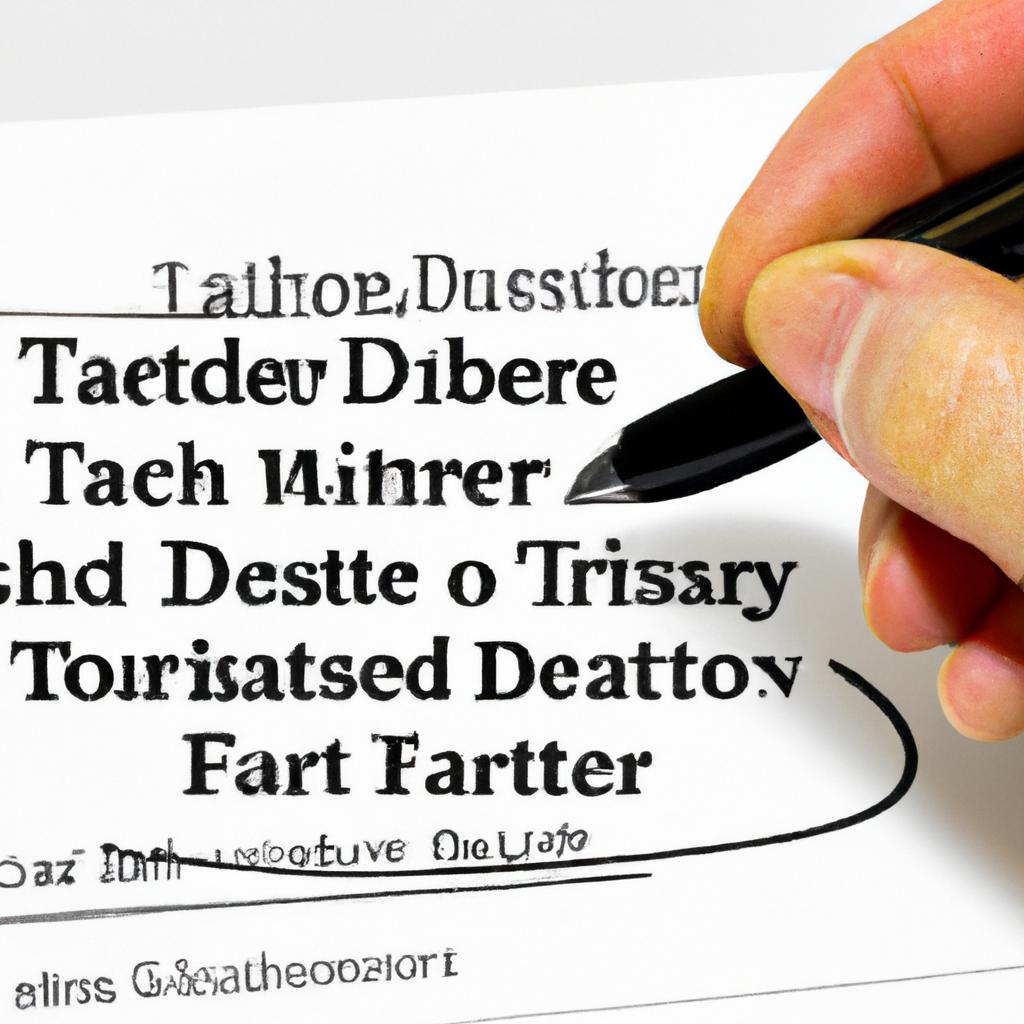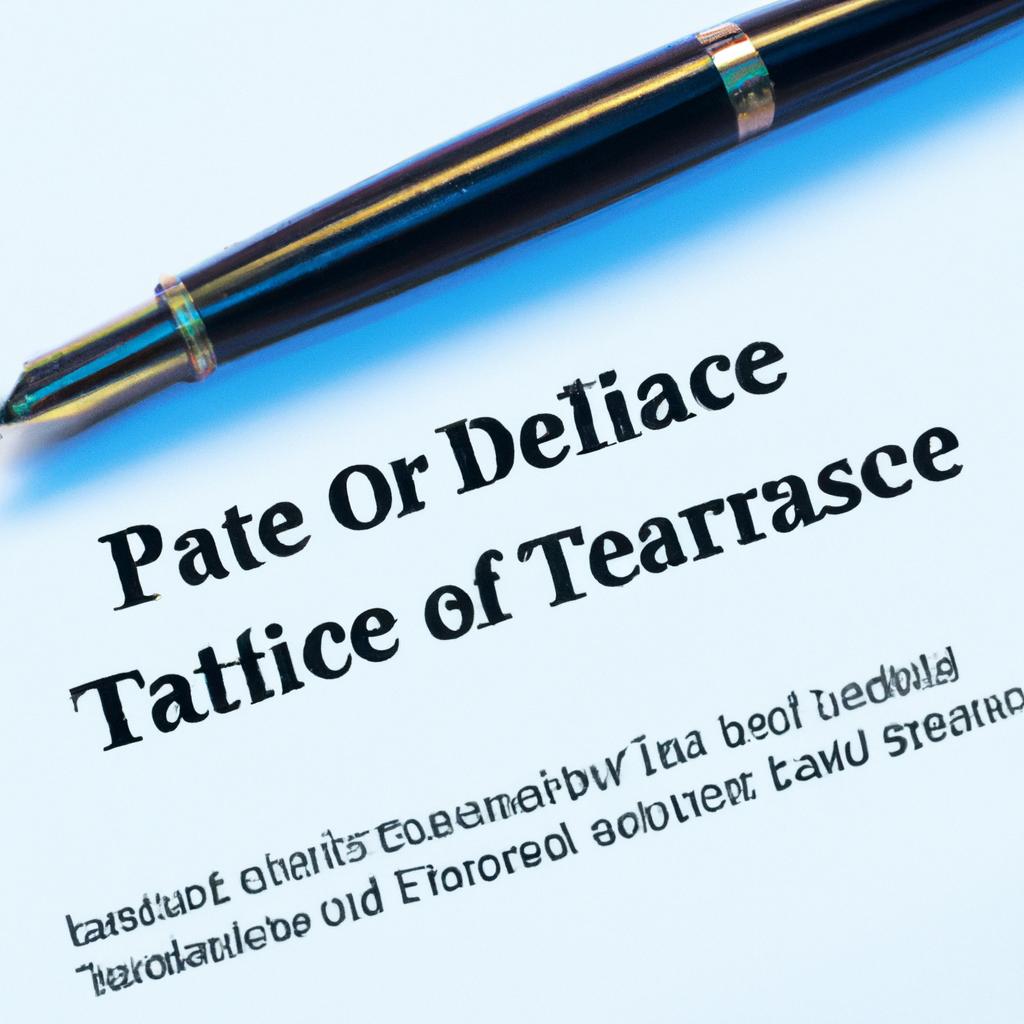In the intricate world of estate planning, the concept of transfer on death title stands as a beacon of efficiency and convenience for future heirs. As seasoned legal professionals at Morgan Legal Group in New York City, we navigate the complexities of this innovative estate planning tool with precision and expertise. Join us as we delve into the nuances of transfer on death title, unveiling its benefits and implications for those seeking to safeguard their assets for generations to come.
Understanding Transfer on Death Titles for Effective Estate Planning
When it comes to effective estate planning, understanding transfer on death titles is crucial. A transfer on death title allows for the seamless transfer of assets to beneficiaries upon the death of the owner, without the need for probate. This can be a valuable tool in ensuring that your loved ones are provided for in the event of your passing.
One of the main benefits of transfer on death titles is that they allow for privacy and flexibility in estate planning. Assets held in a transfer on death title do not go through probate, which means that the transfer of assets can be carried out quickly and privately. Additionally, transfer on death titles allow for easy modification of beneficiaries, giving the owner the flexibility to make changes as needed. By understanding the ins and outs of transfer on death titles, you can ensure that your estate plan is tailored to meet your specific needs and goals.

Key Benefits of Transfer on Death Titles for Seamless Probate Avoidance
Transfer on Death Titles are a powerful tool for individuals looking to seamlessly avoid the probate process when passing on assets to their beneficiaries. By designating a Transfer on Death (TOD) beneficiary for your property, you can ensure that your loved ones receive their inheritance without the need for costly and time-consuming probate proceedings.
One key benefit of Transfer on Death Titles is the ability to maintain privacy and confidentiality in the distribution of your assets. Unlike probate, which is a public process, TOD beneficiaries can receive their inheritance without the details of the transfer being made public. This can be especially important for individuals who wish to keep the distribution of their assets private. Additionally, Transfer on Death Titles allow for a quicker and more efficient transfer of assets to beneficiaries, saving time and money in the long run.

Factors to Consider When Designating Transfer on Death Titles
When designating transfer on death titles, there are several important factors to consider to ensure that your assets are passed on smoothly and according to your wishes. One key factor is choosing the right beneficiaries for your assets. It is important to carefully select individuals who are trustworthy and responsible to inherit your assets upon your passing.
Another crucial factor to consider is updating your beneficiary designations regularly, especially after major life events such as marriage, divorce, or the birth of a child. It is important to review and update your transfer on death titles to reflect any changes in your family or financial situation. By staying proactive and regularly reviewing your beneficiary designations, you can ensure that your assets are passed on according to your wishes.

Best Practices for Utilizing Transfer on Death Titles in Estate Planning
When it comes to estate planning, utilizing transfer on death titles can be a powerful tool to ensure a smooth transfer of assets to your loved ones upon your passing. To make the most of transfer on death titles, it is essential to follow best practices that can help avoid potential pitfalls and complications down the road.
Here are some :
- Regularly review and update your beneficiary designations to reflect any changes in your personal circumstances or relationships.
- Consider naming contingent beneficiaries to ensure that your assets pass according to your wishes in case the primary beneficiary predeceases you.
- Coordinate your transfer on death titles with your overall estate plan to ensure that they align with your broader goals and objectives.
Q&A
Q: What is a transfer on death title?
A: A transfer on death title is a method of transferring property to designated beneficiaries upon the owner’s death without the need for probate.
Q: How does a transfer on death title differ from a traditional will?
A: Unlike a traditional will, a transfer on death title allows the owner to transfer property directly to beneficiaries without going through the probate process.
Q: What types of assets can have a transfer on death title?
A: Transfer on death titles can be used for real estate, vehicles, bank accounts, and other assets that typically pass through probate.
Q: What are the benefits of using a transfer on death title?
A: Using a transfer on death title can help to streamline the inheritance process, avoid probate costs, maintain privacy, and provide clear instructions for asset distribution.
Q: Are there any drawbacks to using a transfer on death title?
A: Some potential drawbacks include limited flexibility in changing beneficiaries, potential disputes among beneficiaries, and the possibility of unforeseen issues arising post-death.
Q: How does one set up a transfer on death title?
A: Setting up a transfer on death title typically involves completing a form provided by the relevant financial institution or government agency and designating beneficiaries for each asset.
The Way Forward
In conclusion, transfer on death titles offer a convenient way to pass on assets seamlessly to beneficiaries without the need for probate. By designating beneficiaries for your property in advance, you can ensure that your assets are distributed according to your wishes. Whether it be real estate, vehicles, or financial accounts, utilizing transfer on death titles can simplify the inheritance process and provide peace of mind for you and your loved ones. Consider exploring this option as part of your estate planning to secure a smooth transition of assets in the event of your passing.






